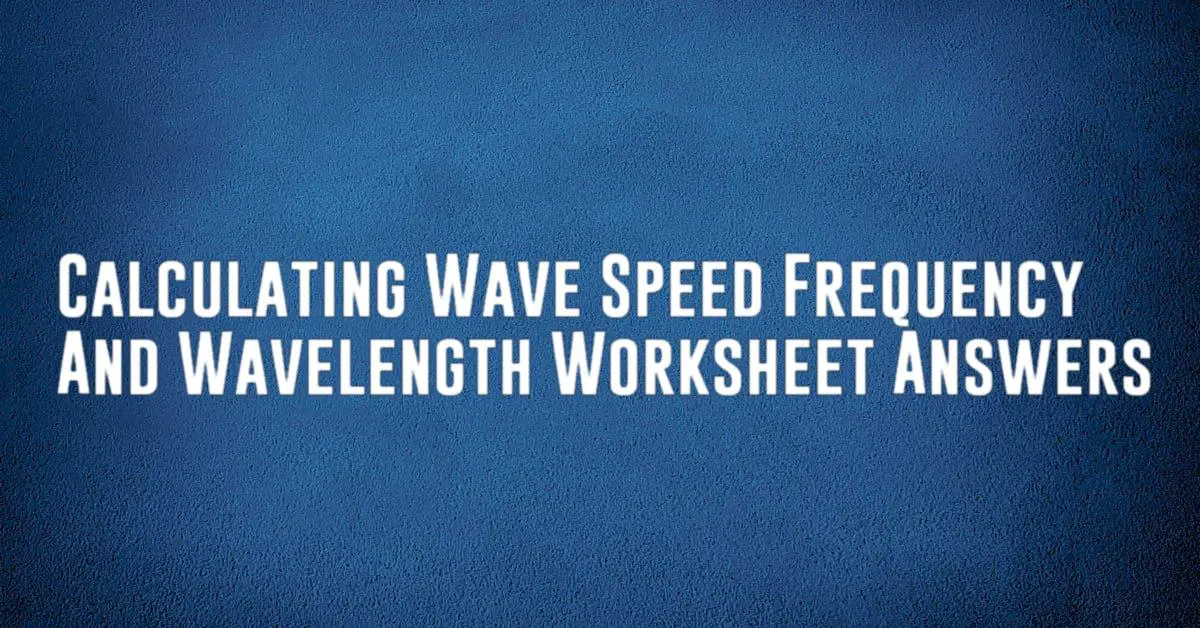Understanding Wave Calculations in Physical Science
When studying physical science, one important concept to grasp is wave calculations. Waves are all around us, from sound waves that we hear to light waves that we see. Understanding the properties of waves and how to calculate various aspects of them is crucial in physics. In this article, we will dive into the world of wave calculations, exploring the different formulas and techniques used to analyze waves in physical science.
What Are Waves?

Before delving into wave calculations, it’s essential to understand what waves are. In physics, a wave is a disturbance that travels through a medium, transferring energy from one point to another without transferring matter. Waves can take many forms, such as sound waves, light waves, and water waves. These waves exhibit various properties, including wavelength, frequency, amplitude, and speed.
Types of Waves
There are two main types of waves: mechanical waves and electromagnetic waves. Mechanical waves require a medium to travel through, such as air or water, while electromagnetic waves can travel through a vacuum, as they do not require a medium. Examples of mechanical waves include sound waves and water waves, while examples of electromagnetic waves include light waves and radio waves.
Wave Properties
Waves exhibit several key properties that are essential for understanding wave calculations. These properties include:
- Wavelength: The distance between two consecutive points on a wave that are in phase with each other.
- Frequency: The number of complete wave cycles that pass a given point in one second, measured in hertz.
- Amplitude: The maximum displacement of a wave from its equilibrium position.
- Speed: The rate at which a wave travels through a medium, calculated as the product of wavelength and frequency.
Wave Calculations
Wave calculations involve using various formulas to determine the properties of waves. Some of the key formulas used in wave calculations include:
Wavelength Calculation:
The wavelength of a wave can be calculated using the formula:
Wavelength = Speed / Frequency
Where: – Wavelength is the distance between two consecutive points on a wave. – Speed is the rate at which the wave travels through a medium. – Frequency is the number of complete wave cycles that pass a given point in one second.
Frequency Calculation:
The frequency of a wave can be calculated using the formula:
Frequency = Speed / Wavelength
Where: – Frequency is the number of complete wave cycles that pass a given point in one second. – Speed is the rate at which the wave travels through a medium. – Wavelength is the distance between two consecutive points on a wave.
Speed Calculation:
The speed of a wave can be calculated using the formula:
Speed = Wavelength x Frequency
Where: – Speed is the rate at which the wave travels through a medium. – Wavelength is the distance between two consecutive points on a wave. – Frequency is the number of complete wave cycles that pass a given point in one second.
Applications of Wave Calculations
Wave calculations are used in various fields, including physics, engineering, and telecommunications. In physics, wave calculations are essential for understanding the behavior of waves and predicting their properties. In engineering, wave calculations are used to design structures that can withstand wave forces, such as buildings and bridges. In telecommunications, wave calculations are crucial for transmitting and receiving signals over long distances.
Conclusion
Wave calculations play a vital role in physical science, allowing us to analyze and understand the properties of waves. By using formulas to calculate aspects such as wavelength, frequency, and speed, we can gain insights into how waves behave and interact with their environment. Whether studying sound waves, light waves, or water waves, mastering wave calculations is essential for any physics enthusiast or aspiring scientist.






